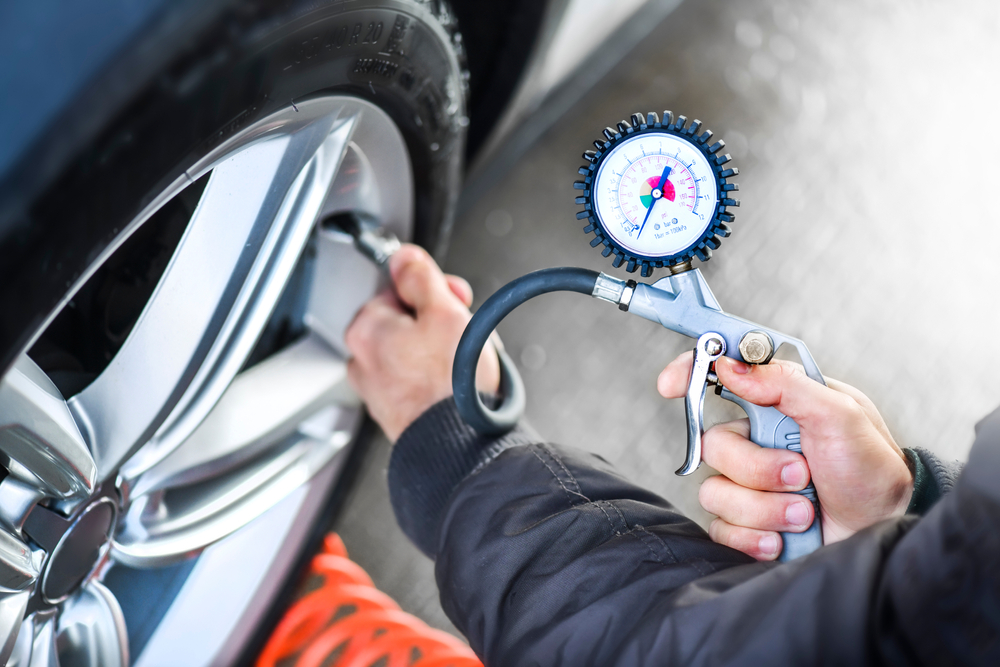If you’ve ever started your car on a cold morning and noticed the tire pressure warning light come on, you’re not alone. Tire pressure drops as temperatures fall — and in places like North Dakota and Minnesota, that can be a regular winter occurrence.
So, what exactly is happening, and what should you do about it?
Why Does Tire Pressure Drop in Cold Weather?
It comes down to science. Air contracts when it’s cold, which means the air inside your tires takes up less space. For every 10°F drop in temperature, your tire pressure can drop about 1–2 PSI (pounds per square inch).
That’s enough to trigger a warning light — and it can lead to problems if left unchecked.
How Much Pressure Loss Is Normal?
Let’s say your tires are set to 35 PSI in the fall. When winter hits and the temperature drops 30 degrees, you could lose 3–6 PSI without any leaks at all. That puts your tires below the safe range, even if nothing is technically “wrong.”
This is one reason it’s smart to check your pressure more often during the winter months.
Why Low Tire Pressure Is a Problem
Underinflated tires can cause:
- Sluggish handling
- Reduced fuel efficiency
- Increased tire wear
- Longer stopping distances
- Higher risk of tire failure
In snowy or icy conditions, the last thing you want is poor traction or unpredictable handling.
How to Check and Adjust Tire Pressure in Winter
- Check when tires are cold — ideally before driving.
- Use a digital tire gauge for accuracy.
- Inflate to the PSI listed on your driver’s door placard, not the number on the tire sidewall.
- If your TPMS light is still on after filling, drive for a few minutes — it should reset.
If it doesn’t go away, stop by a local OK Tire Store. We’ll check it for you.
Should You Overinflate Tires in the Winter?
It’s a common myth — but no, you shouldn’t overinflate. Overinflated tires reduce grip, especially in cold, slick conditions. Stick to your vehicle manufacturer’s recommended pressure. If it’s cold, just check more often.
Should You Worry About TPMS Sensors?
Modern vehicles use Tire Pressure Monitoring Systems (TPMS) to alert you when pressure is low. While these systems are helpful, they can sometimes be slow to reset or overly sensitive during seasonal changes.
If your light won’t go off or keeps coming back on, it might be time to have the sensors checked.
When to Visit a Tire Shop
If you’re:
- Adding air weekly
- Seeing uneven wear
- Getting frequent TPMS alerts
- Unsure if your winter tires are holding pressure
… it’s worth getting your tires inspected. Our team can check your tire pressure, tread wear, and sensor function — and recommend replacements if needed.
FAQ: Winter Tire Pressure Questions
Is it normal for tire pressure to drop overnight in winter?
Yes — cold mornings can cause pressure to drop temporarily, but it should return closer to normal once the tires warm up.
How often should I check my tire pressure in the winter?
At least once a month — or any time the temperature drops suddenly.
Can cold weather cause a flat tire?
It can cause pressure to fall below safe levels, which increases your risk of a flat, especially if your tires are already worn.
Should I switch to winter tires if the pressure keeps dropping?
Winter tires won’t prevent pressure drops, but they’re better designed for cold traction and are a smart move in our climate.

